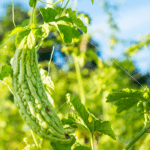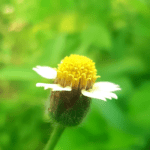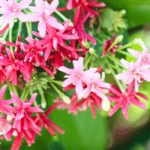The Ultimate Guide on Growing and Caring for Maple Trees
Welcome to our comprehensive guide on cultivating and nurturing maple trees in the Indian context. In this in-depth resource, we will delve into the art of planting and caring for these magnificent trees, with a particular focus on the conditions and considerations relevant to India’s diverse climate. Join us as we embark on a journey through the world of maples, providing specific insights, practical tips, and expert knowledge to help you master the art of maple tree cultivation on Indian soil.

How to Properly Plant a Maple Tree?
Planting a maple tree is a thoughtful endeavor that sets the stage for its lifelong journey. Here’s a step-by-step guide tailored for Indian conditions:
Selecting a Healthy Sapling
- Local Nurseries: Source saplings from local nurseries that are acclimated to the Indian climate.
- Species Selection: Opt for maple species that are well-suited to your region, such as the Indian Acer palmatum varieties.
- Root Health: Inspect the sapling’s root system, ensuring it’s well-developed and free from any signs of disease.
Preparing the Planting Hole
- Ideal Site: Choose a location that receives partial shade, especially during the scorching Indian summers.
- Soil Enrichment: Prior to planting, enrich the soil with well-rotted compost to enhance fertility and structure.
Planting Technique
- Correct Depth: Plant the sapling at the same depth it was in its container, avoiding planting too deep.
- Mulching Magic: Apply a layer of organic mulch around the base of the tree to conserve moisture and suppress weeds.
- Watering Strategy: Water deeply after planting and regularly during the first year to encourage strong root establishment.
Choosing the Right Location for Your Maple Tree
Selecting an optimal location for your maple tree in India involves considering the unique climate and conditions of the subcontinent:
Sunlight and Soil
- Partial Sun: Maples thrive in India’s diverse climate when placed in spots that receive morning sun and afternoon shade.
- Well-Drained Soil: Choose well-drained soil to prevent waterlogging, especially during the monsoon season.
Local Climate Considerations
- Cold Resistance: Select maple species that can tolerate mild winter temperatures, making them suitable for regions with cooler winters.
- Heat Resilience: For hotter regions, consider varieties that can withstand intense summer heat without stress.
Understanding the Right Soil Conditions for Maple Trees
The soil in which you plant your maple tree greatly impacts its growth and resilience in the Indian context:
pH Levels and Drainage
- Soil pH: Most maples prefer slightly acidic to neutral soil. Adjust pH levels if necessary using organic amendments.
- Enhanced Drainage: Indian soils can be clay-heavy, so adding sand and organic matter improves drainage and root health.
Nutrient-Rich Soil
- Nutrient Boost: Before planting, enrich the soil with well-decomposed compost, cow dung, or organic fertilizers.
- Balanced Nourishment: Regularly supplement with balanced fertilizers to meet the tree’s nutrient requirements.
Importance of Well-Drained Soil and Optimal pH Levels
Ensuring well-drained soil and maintaining optimal pH levels is critical for a maple’s health and longevity in India:
Preventing Waterlogging
- Monsoon Preparedness: In areas with heavy rainfall, planting in raised beds prevents waterlogging and root rot.
- Ample Drainage: Ensure the planting hole has proper drainage channels to avoid water accumulation.
pH Balance for Nutrient Uptake
- Optimal Nutrient Absorption: Maintaining the right pH level ensures that essential nutrients are available to the tree’s roots.
- Soil Testing: Regularly test the soil pH and amend it as needed to sustain healthy growth.
Expert Insight: In the Indian context, where monsoons and varying climates prevail, well-drained soil and appropriate pH levels are the foundation for robust maple trees that can withstand the challenges of our environment.
The Best Season and Climate to Plant Maple Trees
Choosing the right time to plant your maple tree aligns with India’s distinct seasons and climate conditions:
Favorable Planting Seasons
- Post-Monsoon Planting: Planting immediately after the monsoon is ideal, as the soil is moist, and the weather is conducive to root establishment.
- Late Winter Window: In milder climates, late winter is also suitable, allowing the tree to settle in before the onset of intense heat.
Climate Variability
- North vs. South: Consider regional climate differences. Northern regions experience colder winters, while the southern regions face hotter temperatures.
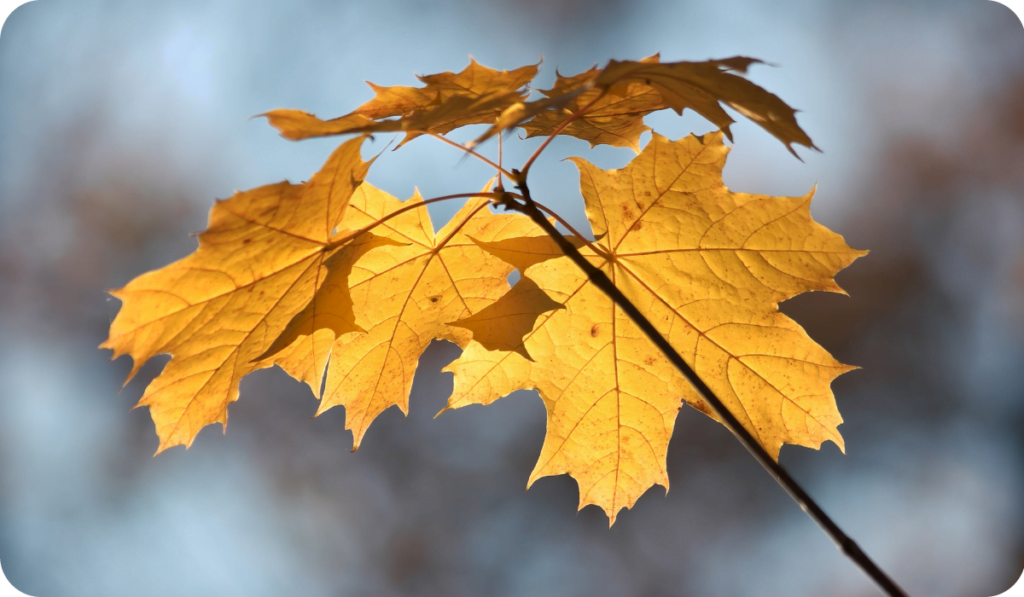
Preparation Techniques for Planting a Maple Tree
Thorough preparation before planting sets the stage for a thriving maple tree in India:
Caring for the Sapling
- Hydration: Prior to planting, ensure the sapling is well-watered to prevent transplant shock.
- Trimming: Prune any damaged or overcrowded roots to encourage healthy growth post-transplant.
Soil Acclimatization
- Soil Conditioning: Condition the planting hole soil with a mixture of compost and native soil for smooth acclimatization.
- Root Inspection: Gently untangle and spread out the roots before planting to encourage outward growth.
Vigilant Mulching
- Mulch Application: Apply a thick layer of organic mulch around the tree’s base, extending it beyond the drip line.
- Mulch Benefits: Mulch conserves soil moisture, suppresses weeds, and protects roots from temperature fluctuations.
Practical Tips:
- In areas with intense summer heat, consider shading the sapling during the first summer to prevent stress.
- Use locally available organic materials for mulching to provide maximum benefits to the tree.
Expert Insight: India’s diverse climate demands meticulous preparation to ensure your maple tree’s successful establishment. By tailoring these techniques to your region’s unique conditions, you set the stage for a healthy and thriving tree.
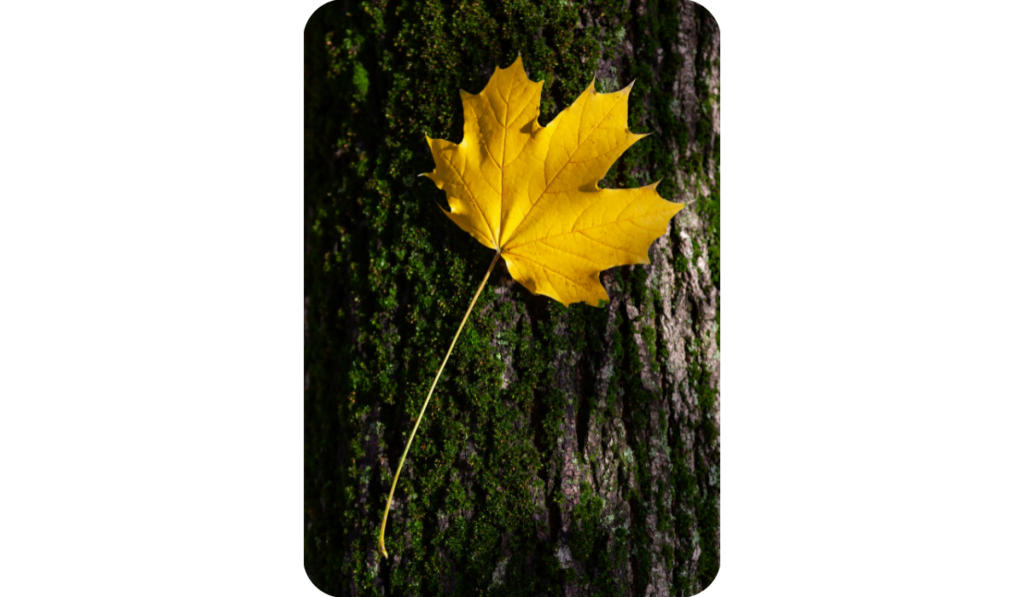
How to Properly Care for Your Japanese Maple Plant?
Caring for your Japanese Maple in the Indian landscape requires a tailored approach to ensure its beauty and vitality thrive. Let’s delve into the specifics of nurturing this exquisite tree:
Identifying Special Needs of a Japanese Maple
- Shade and Sun Balance: Japanese Maples flourish in dappled sunlight. Protect them from harsh afternoon sun to prevent leaf scorch.
- Wind Shelter: Shield your Japanese Maple from strong winds that can damage its delicate branches and foliage.
Using Optimal Mulch and Soil for Your Japanese Maple
- Acidic Soil Preference: Japanese Maples favor slightly acidic soil. Incorporate well-rotted leaf compost or peat moss to maintain the pH balance.
- Mulch Magic: Apply a layer of organic mulch around the tree’s base, ensuring it doesn’t touch the trunk. This retains moisture and regulates temperature.
Recognize and Prevent Common Diseases and Pests
- Aphids and Scale Insects: Keep a vigilant eye for these sap-sucking insects. Use neem oil or insecticidal soap to control infestations.
- Fungal Issues: Watch for signs of fungal diseases like powdery mildew. Promote good air circulation and consider fungicidal treatments if needed.
How to Prune and Shape Your Japanese Maple
- Selective Pruning: Regularly remove dead, damaged, or crossing branches to maintain an open canopy.
- Aesthetic Pruning: Enhance the tree’s natural beauty by selectively shaping it. Focus on maintaining a balanced silhouette.
The Role of Watering and Climate in Growing a Healthy Japanese Maple
- Consistent Moisture: Japanese Maples prefer consistently moist but not waterlogged soil. Mulch helps retain moisture levels.
- Monsoon Management: During the monsoon season, ensure proper drainage to prevent root rot.
Practical Tips:
- Apply a slow-release, balanced fertilizer in spring to provide essential nutrients.
- Grouping Japanese Maples together can create a microclimate that suits their preferences.
Expert Insight: Caring for a Japanese Maple demands a meticulous approach that factors in its sensitivity to light, soil, and weather. By addressing its unique needs, you can enjoy its elegance for years to come.
What Are the Key Attributes of Different Types of Maple Trees?
Delving into the diverse world of maple trees reveals a captivating array of species, each with its unique characteristics. Let’s explore the distinguishing traits of various maple varieties:
Characteristics of Red Maple vs Sugar Maple
Red Maple:
- Foliage: Reddish leaves in spring, turning green in summer and vibrant red in fall.
- Adaptability: Thrives in various soil types and climates, making it a versatile choice.
- Size: Grows to a medium to large size, making it suitable for various landscapes.
Sugar Maple:
- Foliage: Known for its iconic, star-shaped leaves with brilliant autumn hues.
- Maple Syrup: Prized for its sap, which is used to make maple syrup.
- Slow Growth: Takes longer to establish but rewards with longevity and majestic presence.
Distinguishing Features of Norway Maple vs Sycamore Maple
Norway Maple:
- Leaf Shape: Distinctive five-lobed leaves with serrated edges.
- Rapid Growth: Grows quickly, forming a dense canopy.
- Shade Tree: Provides ample shade, making it popular for urban landscapes.
Sycamore Maple:
- Unique Bark: Known for its attractive mottled bark that peels away in patches.
- Large Leaves: Displays large, palmate leaves that change color in the fall.
- Urban Tolerance: Thrives in urban environments and pollution-prone areas.
Attributes of Acer Rubrum vs Acer Palmatum
Acer Rubrum (Red Maple):
- Vivid Coloration: Leaves shift from green to brilliant red in autumn.
- Adaptability: Flourishes in a range of soils and climates, even tolerating wet conditions.
- Wildlife Attraction: Attracts birds and wildlife due to its seeds and nectar.
Acer Palmatum (Japanese Maple):
- Elegant Form: Known for its graceful, delicate branches and intricate leaf shapes.
- Fall Splendor: Leaves transform into an array of warm hues, creating an autumn masterpiece.
- Cultural Significance: Revered in Japanese culture for its symbolism and aesthetic value.
A Deep Dive into Acer Saccharum and Acer Platanoides
Acer Saccharum (Sugar Maple):
- Iconic Leaves: Recognizable for its five-lobed leaves that symbolize the quintessential maple shape.
- Maple Syrup Production: Valued for its high sugar content sap, ideal for making maple syrup.
- Sturdy Canopy: Forms a dense, sturdy canopy that provides ample shade.
Acer Platanoides (Norway Maple):
- Rapid Growth: Grows quickly into a large, rounded crown.
- Diverse Foliage: Offers various leaf shapes and sizes, from deeply lobed to palmate.
- Urban Resilience: Tolerates pollution and urban conditions, making it suitable for city landscapes.
Notable Features of the Ornamental Japanese Maple and Its Several Varieties
The ornamental Japanese Maple, scientifically known as Acer palmatum, presents an array of captivating varieties, each with distinct characteristics:
Dwarf Varieties:
- Compact Size: Perfect for small gardens or container planting.
- Leaf Variety: Offers a range of leaf shapes and colors, from deep red to golden yellow.
Dissectum Varieties:
- Lace-Like Leaves: Known for finely dissected leaves that create a delicate, lacy effect.
- Elegant Form: Branches cascade gracefully, making them perfect focal points.
Coral Bark Varieties:
- Vibrant Stems: Stand out with striking coral-colored bark in winter.
- Year-Round Appeal: Offers visual interest even in the dormant season.
Practical Tips:
- Research specific maple species that thrive in your region’s climate and soil conditions.
- Consider the mature size and growth rate of different varieties when planning your landscape.
Expert Insight: Understanding the attributes of various maple species empowers you to make informed choices that align with your aesthetic preferences and the conditions of your Indian environment. By selecting the right varieties, you can create a diverse and visually stunning landscape that reflects the beauty of maples.
Understanding the Growth Process and Seasons of a Maple Tree
A maple tree’s growth journey is a remarkable spectacle, shaped by the changing seasons and nature’s rhythmic dance. Let’s explore the intricate phases that mark the lifecycle of these majestic trees in the Indian context.
Decoding the Lifecycle of a Maple Tree from Seed to Maturity, Basics of Tree Care
Germination Stage:
- Seed Dispersal: Maple seeds, or “helicopters,” are released in spring or early summer.
- Favorable Conditions: Germination occurs when seeds land in moist soil, supported by optimal temperature and sunlight.
Early Growth:
- Cotyledons Emergence: Cotyledons, or embryonic leaves, push through the soil, fueled by energy stored in the seed.
- Leaf Development: True leaves gradually replace cotyledons, and the young sapling begins photosynthesis.
Juvenile Stage:
- Vertical Growth: The sapling stretches towards the sky, developing a central leader and lateral branches.
- Root Expansion: Roots grow to anchor the tree and access water and nutrients.
Maturity and Beyond:
- Canopy Development: The tree’s crown expands, creating a lush canopy that provides shade and shelter.
- Reproduction: Mature trees produce flowers that develop into seeds, completing the cycle.
How a Maple Tree Changes from Spring Through Autumn
Spring Awakening:
- Budding: Buds swell as warmth returns, ready to burst into new growth.
- Leaf Unfurling: Delicate leaves emerge, bathed in vibrant greens.
Summer Vitality:
- Leaf Maturation: Leaves mature, maximizing photosynthesis for growth.
- Energy Storage: The tree stores energy in roots, preparing for the upcoming dormant season.
Autumn Transformation:
- Color Metamorphosis: Cooler temperatures trigger a chemical change, causing leaves to display a kaleidoscope of colors.
- Leaf Shedding: Leaves fall, marking the end of the growing season as the tree conserves energy.
The Impressive Fall Color Display: Why and How It Happens
Photosynthesis and Pigments:
- Chlorophyll Breakdown: As days shorten, chlorophyll production decreases, revealing other pigments.
- Carotenoids and Anthocyanins: Carotenoids yield yellows and oranges, while anthocyanins provide reds and purples.
Environmental Factors:
- Temperature Influence: Cool, sunny days and chilly nights intensify coloration.
- Drought Impact: Dry conditions can dull fall colors, emphasizing the role of soil moisture.
Maple Tree Dormancy and Preparation for Winter
Entering Dormancy:
- Temperature Signal: Cooling temperatures prompt the tree to prepare for winter.
- Metabolic Slowdown: Metabolic processes slow down, conserving energy during cold months.
Winter Survival:
- Reduced Activity: Growth halts, and leaves fall, minimizing water loss through transpiration.
- Winter Bud Protection: Scales protect buds from freezing temperatures and desiccation.
The Critical Role of Sunshine in the Growth of a Maple Tree
Photosynthesis Process:
- Solar Energy Conversion: Leaves capture sunlight and convert it into energy through photosynthesis.
- Sugar Production: Sugars produced are essential for growth, development, and overall tree health.
Sunlight and Growth:
- Stem Elongation: Adequate sunlight promotes stem elongation and canopy development.
- Leaf Expansion: Sunlight triggers leaf expansion, maximizing surface area for photosynthesis.
Shade Adaptation:
- Shade Tolerance: Some maple species are adapted to thrive in lower light conditions.
- Balancing Light: Proper pruning ensures sunlight reaches vital areas without excessive shading.
Practical Tips:
- Mulch around the base helps regulate soil temperature, benefiting root health during dormancy.
- Protect young trees from harsh winter sun to prevent sunscald and bark damage.
Expert Insight: Understanding the intricacies of a maple tree’s growth, from its lifecycle stages to the mesmerizing color changes, empowers you to provide the necessary care and support at each phase. By catering to the tree’s seasonal needs, you can foster its health and longevity, resulting in a thriving testament to nature’s beauty in your Indian landscape.
How to Produce and Collect Maple Syrup from Your Maple Tree?
Producing your own maple syrup is a delightful journey that connects you to the natural world and its sweet rewards. In the Indian context, where maples thrive, let’s embark on the process of creating this liquid gold:
Recognizing Maple Trees Suitable for Sap Extraction
- Species Selection: Opt for sugar maple (Acer saccharum) and black maple (Acer nigrum) trees, as they yield sap with higher sugar content.
- Size and Age: Choose mature trees with a diameter of at least 10 inches for optimal sap flow.
The Science Behind Maple Syrup: Why It’s Unique to Maple Trees
- Sap Composition: Maple sap contains water and sugars stored in the tree’s roots during winter.
- Sugar Concentration: Cold nights and warm days trigger sap movement, concentrating sugars.
A Step-by-Step Guide to Tap Maple Trees for Their Sap
- Gathering Supplies: Collect tapping equipment, including taps, buckets, drill, hammer, and collection containers.
- Selecting Tapping Sites: Choose south-facing sides of trees, 2-3 feet above the ground.
How to Process Sap into Pure Maple Syrup
- Collecting Sap: Empty collection containers daily, ensuring the sap is fresh.
- Boiling Process: Evaporate excess water from sap using an outdoor fire, stove, or evaporator.
Tips for Storing and Using Homemade Maple Syrup
- Filtering and Finishing: Filter syrup through a fine mesh to remove impurities, then finish indoors to control consistency.
- Storage Considerations: Store in sanitized glass or plastic containers. Refrigerate for short-term use, freeze for long-term storage.
Practical Tips:
- Ensure the tap holes are clean and clear of debris to maintain a steady flow.
- Monitor sap flow, as it can vary based on weather conditions.
Expert Insight: The process of producing maple syrup, from tapping trees to savoring the end product, is a rewarding experience that connects us to the natural world’s rhythms. As you embark on this journey in the Indian landscape, you’ll witness the transformation of sap into a delectable syrup that captures the essence of maple trees.
FAQs People Also Ask About Maple Tree (Tips to Grow, Care and Other Basic answers in Short)
Q: How do I properly care for maple trees?
A: To properly care for maple trees you need to ensure they get full sun and have well-draining soil. Maple trees may also need to be watered during dry periods. In the early spring, prune out any dead or damaged limbs. Protect the tree trunk with a tree guard when the tree is young to prevent damage from wildlife.
Q: When is the best time to plant a maple tree?
A: The best time to plant a maple tree is in the late spring or early fall. This allows the tree to establish its root system before the extreme temperatures of summer or winter.
Q: What type of soil do maple trees prefer?
A: Maple trees prefer well-drained soil. They can thrive in a variety of soil types, including clay, but they won’t do well in waterlogged conditions.
Q: Can I grow a maple tree as a bonsai?
A: Yes, several tree species of maples can be grown as bonsai, including the amur maple, silver maple, and bigleaf maple. Bonsai is a Japanese art form that involves growing trees in small containers. With proper care, you can create a miniature but realistically shaped tree.
Q: How fast do maple trees grow?
A: The rate at which a maple tree grows depends on the species. For instance, a silver maple can grow up to 2 feet per year, while a paperbark maple grows much more slowly. Generally, younger maple trees grow faster than older, more established trees.
Q: Why do the leaves of my maple tree turn yellow?
A: Leaves turn yellow for a variety of reasons. This could indicate a lack of water or nutrients, soil that is too compacted or poorly drained, a disease, or an infestation of pests. If only a certain part of the tree is affected, it might be due to a localized issue.
Q: Which maple tree species have bright red leaves in autumn?
A: Many maple tree species produce bright red leaves in the fall. This includes the red maple, paperbark maple, and some varieties of Japanese maple. The leaves of the bigleaf maple, as one example, turn a bright red in the fall – a feature that is often used in ornamental tree planning.
Q: Is there a type of maple tree that is ideal as an ornamental tree?
A: Yes, several species of maples are known for their ornamental attributes. The paperbark maple, with its unique peeling bark, and the amur maple, with its fiery fall color, are both popular ornamental trees. The Japanese maple is also a very popular ornamental tree with many different cultivars available.
Q: When do maple trees start producing fruit?
A: Maple trees start producing fruit once they are well established and mature, typically around 10-15 years old. The fruit of a maple tree is a samara, commonly known as a “helicopter seed.”
Q: Where can I find maple trees for sale?
A: There are many places to find maple trees for sale. You can purchase them at local nurseries, garden centers, and even some major retailers. Alternatively, you can find a wide variety of maple trees for sale online, but keep in mind the shipping costs and the importance of buying from a reputable seller.
Q: What is unique about the silver maple compared to other maple trees?
A: Silver maple trees are known for their distinct color, which sets them apart from other types of maples. The underside of their leaves is a silvery hue, making them easily identifiable. Their beautiful green leaves often reflect sunlight, giving them a shimmery effect.
Q: How can I properly care for a paperbark maple?
A: Paperbark maples are not overly demanding. They grow best in full sun to partial shade. Regular watering is important, especially in the first few years while the young maple tree is establishing its root system. Removal of dead leaves can also benefit the tree’s overall health and appearance.
Q: Are amur maple trees fast-growing?
A: Yes, the amur maple is a fast-growing, small tree. It can grow quite far if left unchecked. However, they are also easily pruned, making them excellent specimen trees for smaller gardens.
Q: Is the maple tree the one that forms the Canadian flag’s symbol?
A: Yes, the maple leaf depicted on the Canadian flag is from a maple tree. In fact, certain trees that are native to Canada, specifically the sugar maple, have leaves that closely resemble the leaf on the flag.
Q: How are Japanese maple trees different from other maple tree varieties?
A: Japanese maples are generally smaller and more delicate-looking than other maple trees. They are known for their stunning variety of colours, from the deep reds of the ‘Crimson King’ to the apricot-toned ‘Osakazuki’. They are also more tolerant to the shade compared to many plant species and can grow even with a bit of ivy surrounding their trunks.
Q: What should I do if the green leaves of my maple tree have turned brown?
A: Brown leaves could be a sign of a number of issues, including overwatering, inadequate water, or even a disease. It’s important to make sure you’re not over or under-watering the tree. If proper watering doesn’t improve the situation, you should consult a certified arborist or professional.
Q: How often should I water a young maple tree?
A: You should water a young maple tree once a week, but more often during hot, dry periods. Be careful not to overwater the tree, as this can cause health issues such as root rot. Keep in mind that watering needs may vary based on factors such as soil type and climate.
Q: Are older maple trees more difficult to care for than younger ones?
A: Not necessarily. In general, older trees are more resilient and can withstand harsher conditions, but they also may require more maintenance, depending on their health and location. For example, bigger trees might require professional pruning, while a smaller tree can be managed more easily by a homeowner.
Q: What makes maple trees stand apart from other trees?
A: Maple trees are known for their striking fall color, their sap which is used to make maple syrup, and their distinctive, palmate leaves. Many varieties are also excellent specimen trees and create beautiful displays in gardens and landscapes. Furthermore, maples are also symbolically important in various cultures and are even represented on the Canadian flag.
Conclusion:
As our exploration concludes, we’ve traversed the rich tapestry of maple trees’ importance, varieties, growth, and care. From planting and nurturing to understanding their lifecycle and extracting syrup, the world of maples offers a profound connection to nature’s beauty and bounty, tailored to the Indian context.
About our Web Store www.shehrikisaan.com
For a wide selection of fertilizers and soil amendments suitable for all these plants, we invite you to explore our esteemed webstore at www.shehrikisaan.com. Our webstore offers a comprehensive range of products designed to enhance the growth and vitality of your plants.
Whether you’re seeking specialized fertilizers, organic amendments, or premium-quality soil enhancers, our webstore is your one-stop destination. With our commitment to providing garden enthusiasts with top-notch products, you can trust us to cater to your gardening needs effectively. Visit www.shehrikisaan.com today and unlock the secret to flourishing plants.
Discover our Social Media Presence and web store. Choose your favourite platforms:
🌐 Google Business Link: https://goo.gl/maps/wgs6yU8mArXRfHdi9
🎥 YouTube: https://www.youtube.com/@shehrikisaan
💼 LinkedIn: https://www.linkedin.com/company/shehrikisaan/
📌 Pinterest: https://in.pinterest.com/ShehriKisaan/
📘 Facebook: https://www.facebook.com/ShehriKisaan/
📷 Instagram: https://www.instagram.com/shehrikisaan_gn/
🐦 Twitter: https://twitter.com/Shehri_Kisaan
🛒 Product Web Store: www.shehrikisaan.com
📚 Check out our other articles, education materials, blogs, and write-ups too: www.shehrikisaan.in



